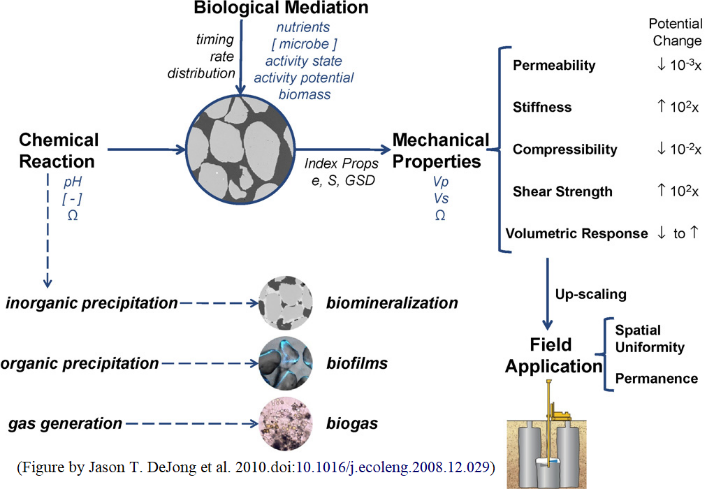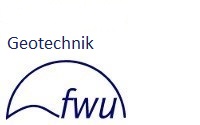Investigation on the engineering behaviour and stabilization mechanism of clayey soils stabilized with enzyme additives
| Operational time: |
01.04.2022 - 31.03.2025 |
| Sponsor: |
eigenfinanziert |
| Responsible: |
Shuai Zhang, M.Sc. |

Brief description:
Ground improvement using sustainable and environmentally friendly agents have been the focus of research in recent years. Biological stabilization is one of the emerging techniques in this field which aims at enhancing the engineering properties of soils through enzyme additives treatment. However, current research on the engineering performance of clays stabilized with enzyme admixtures remains insufficient and the results lack consensus. Although hypothetical stabilization mechanisms and interaction of enzyme with clay minerals have been proposed, limited laboratory verification has occurred. This study aims at complementing the experimental investigation on the engineering performance of enzymes stabilized clays and the exact interaction process which provide insights into the application of enzymes in ground improvement and the experimental exploration of stabilization mechanism. Two aspects are important here. Firstly, a more comprehensive understanding of the engineering performance of soils stabilized with enzyme additives should be identified. In this section, an array of standard experimental investigation on the mechanical and physical properties of treated and untreated (control group) soils samples are to be conducted. The effect of factors influencing the performance are examined in subsequent tests. The aim is to clarify the optimum utilization conditions, especially in terms of curing temperature, pH value, and the content of enzymes and clay minerals. The durability will then be tested under cyclic wetting-drying conditions. On the other hand, this research project ought to contribute to presenting a transparent stabilization process and validating the stabilization mechanism of enzyme additives from a microstructure perspective. To do this, it is necessary to carry out related advanced tests like X-ray fluorescence (XRF) test for qualitative and quantitative analysis of the active ingredients involved in stabilization process and scanning electron microscopy (SEM) test for exploring the microstructural variation in the context of improved mechanical behavior. The results should then lay the basis of the recommendations on how to implement enzyme-based soil improvement in typical geotechnical engineering applications more effectively.
